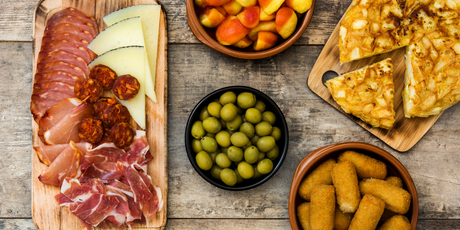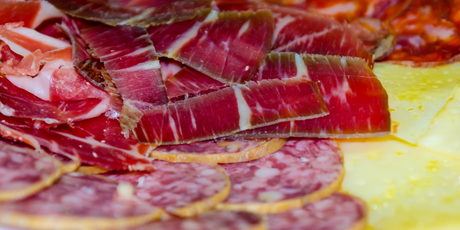
Where to Buy Spanish Food in Toronto, Montreal & Ottawa
By G Suárez
Looking for authentic Spanish food in Toronto, Montreal, or Ottawa? Shop online at Solfarmers: jamón, chorizo, olive oil, wine & more delivered to your door.

By G Suárez
Looking for authentic Spanish food in Toronto, Montreal, or Ottawa? Shop online at Solfarmers: jamón, chorizo, olive oil, wine & more delivered to your door.

By G Suárez
Build your Spanish pantry at home in Canada. From olive oil to bomba rice, discover the essentials available online at Solfarmers.
Read more
By G Suárez
Discover why Spanish charcuterie—jamón, chorizo, salchichón, Manchego—is trending in Canada. Shop authentic products online at Solfarmers.
Read more
By G Suárez
From jamón to turrón, discover 10 authentic Spanish snacks Canadians are loving. Order them online from Solfarmers and enjoy Spain at home.
Read more
By G Suárez
Upgrade your kitchen with Spain’s top 5 essentials: olive oil, jamón, chorizo, Manchego, and conservas. Shop them all online at Solfarmers.
Read more
By G Suárez
From turrón to polvorones, discover authentic Spanish sweets now available in Canada. Shop online at Solfarmers with fast delivery.
Read more
By G Suárez
Discover the history of Spanish tapas and how to enjoy them in Canada. Shop authentic jamón, chorizo, olives, and wines at Solfarmers.
Read more
By G Suárez
Discover why Spanish extra virgin olive oil is a must-have in Canadian kitchens. Shop authentic oils online at Solfarmers with fast delivery.
Read more
By G Suárez
Looking for authentic Spanish food in Canada? Discover where to buy jamón, olive oil, conservas, and more online at Solfarmers with fast delivery.
Read more
By G Suárez
Bring Spain to your home with a tapas night in Canada. Discover easy tapas ideas and shop authentic Spanish products online at Solfarmers.
Read more
By G Suárez
Discover the 7 most popular Spanish foods in Canada. From jamón to turrón, shop authentic products online at Solfarmers with fast delivery.
Read more
By G Suárez
Discover how to cook authentic Spanish paella in Canada. Shop online for bomba rice, saffron, olive oil & more at Solfarmers.
Read more
By Solfarmers Operations
Spain's culinary scene is truly a feast for the senses—a colorful blend of vibrant ingredients, age-old traditions, and rich cultural heritage. Imagine the smoky aroma of chorizo, the buttery melt...
Read more